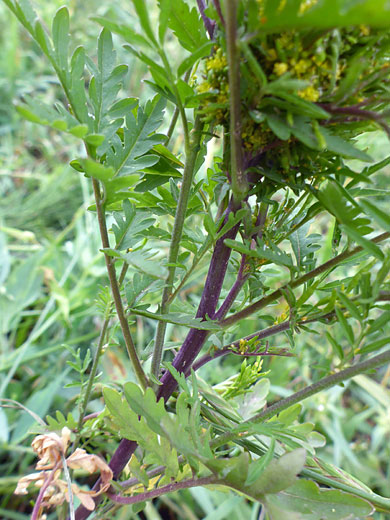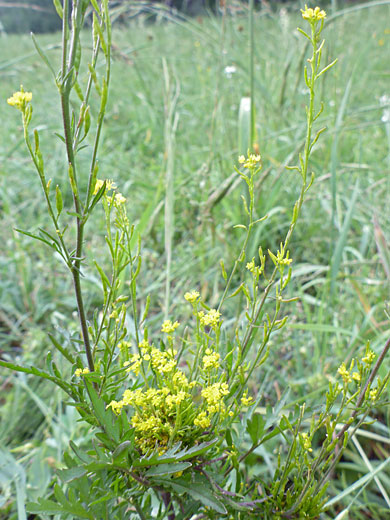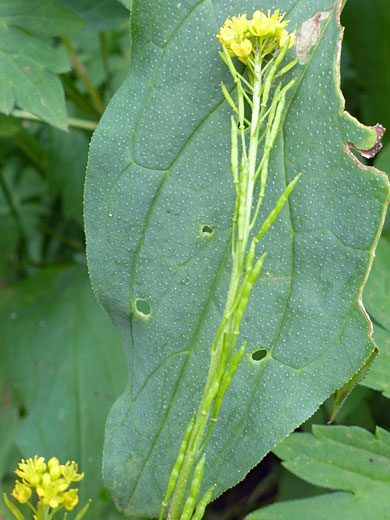Common name:
Mountain tansy mustard
Family:
Scientific name:
Descurainia incana
Main flower color:
Range:
Most of the western states; not Arizona or the southern Great Plains
Height:
Up to 4 feet
Habitat:
Varied: woodland, rocky hillsides, meadows, waste ground, riparian places, roadsides. From near sea level to 11,500 feet
Leaves:
Lanceolate to obovate to oblanceolate, pinnately divided into lobed leaflets
Season:
May to August
Descurainia incana is characterized by tall stems, lobed leaves and fruits which are linear, hairless, and angled vertically upwards, often touching the stem. Leaves and stems have a covering of fine, short hairs, which may be branched. Basal leaves are borne on stalks of up to 2 inches, while stem leaves are generally sessile. All leaves are divided into well-separated leaflets, their margins often lobed. Stems branch above the middle.
Flowers are produced in clusters, from the leaf nodes and the top of the stem; the clusters are initially quite compact but elongate markedly at the fruiting stage. The small flowers are formed of four yellowish, oblong sepals and four yellow, oblanceolate petals, all less than 0.1 inches in length. Fruits are usually about 0.4 inches long, widest in the middle, and slightly constricted between each seed. Fruits are attached by stalks of about the same length.
Flowers are produced in clusters, from the leaf nodes and the top of the stem; the clusters are initially quite compact but elongate markedly at the fruiting stage. The small flowers are formed of four yellowish, oblong sepals and four yellow, oblanceolate petals, all less than 0.1 inches in length. Fruits are usually about 0.4 inches long, widest in the middle, and slightly constricted between each seed. Fruits are attached by stalks of about the same length.
All Contents © Copyright The American Southwest | Comments and Questions | Contribute | Site Map







